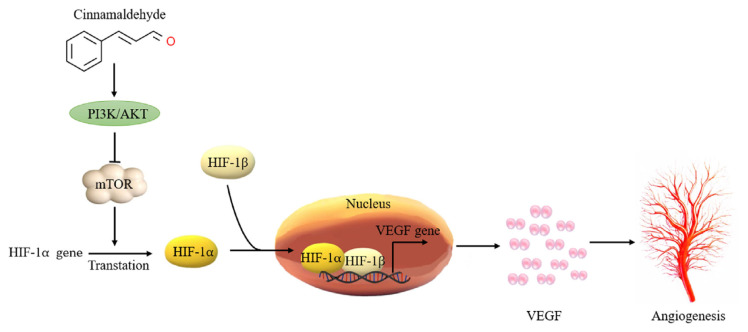Fig. 2.
The mechanism through which cinnamaldehyde exerts its anti-angiogenic effects in cancer. It demonstrates how cinnamaldehyde hinders the formation of new blood vessels by suppressing vascular endothelial growth factor and inhibiting the proliferation of endothelial cells. This antiangiogenic effect is instrumental in reducing the nutrient supply to tumors, thereby impeding their growth and metastasis. The transcription factor HIF-1 plays a crucial role in regulating angiogenesis and tumor growth during cancer progression, orchestrating gene expression in response to hypoxia and changes in growth factors. P13K, Phosphatidylinositol-4,5-bisphosphate 3-kinase; AKT, protein kinase B; mTOR, mammalian target of rapamycin; HIF, Hypoxia-inducible factor; VEGF, vascular endothelial growth factor.

